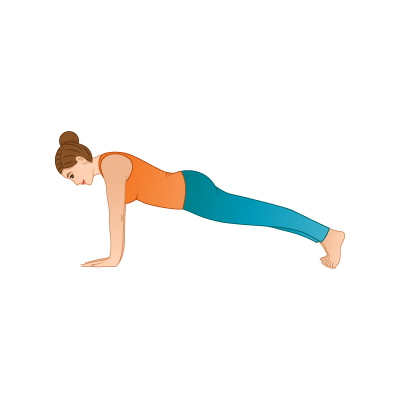Tis the season for teaching partner yoga – 3 family friendly poses for giving and receiving
December 2, 2015 | 4 min read
Q: What did the yogi want for (Christmas, Hanukah, Diwali)?
A: No gifts please, just presence
This third Thursday in November marks the beginning of a month long celebration of winter holidays. As the anticipation builds and preparations begin, many of your students may be looking for new ways to connect with their yoga. Including partner and family poses into your yoga class plan is a gift worth giving and one your students will want to bring home to share with family and friends over the holidays.
Receiving pleasure with a chest stretch
This starter pose for two brings together easy pose (sukanasana) and 1/2 boat (navasana). Begin with Partner A in easy pose and Partner B seated just behind (½ a leg’s length away) in bent knee boat. Partner A externally rotates the shoulders, releasing the arms and bringing them behind the back. Partner B brings their feet to the A’s middle back muscles just below the shoulders – on either side of the spine. B holds A’s hands or arm (hand-to-wrist- hold may also be used). On the inhale, A lifts the sternum as B gently pulls the arms back and pressing the chest forward with their feet.
Breathe naturally for 5 rounds of inhales and exhales. Each position is a counter pose for the other, so change sides and repeat. The benefits for Partner A include improved breathing and spinal flexibility. Partner B’s payback is a stronger set of abs and improved digestive system. Both poses are effective stress relievers and suitable for all levels of practice, age and shape including pregnancy.
Giving joy with child pose
This is a partner pose combining child pose (balasana) with fish pose(matsyasana). Begin with Partner A in child pose (with knees together supporting the back) and Partner B in a squat (A& B are tail to tail) or table top position (directly above A). Partner B then places their tail bone on top of A’s, before lowering into a supported backbend. To complete the pose, B extends into fish pose with the arms over the head and legs extended. Relax the whole body and breath (naturally in child and more deeply in fish for 5-10 rounds of inhales and exhales).
Bending backwards and forwards stretches the back muscles, separating the vertebrae from each other and improving the flexibility of the spine. Child pose is a gentle forward bend that benefits the discs, relieving pressure on the nerve connections to the spinal cord, helping the disc to move back into the correct position. Fish pose benefits the internal organs, stretching the abdomen, pelvis and chest, improving lung function and stimulating respiration, thyroids and thymus. The practice is suitable for kids and adult partners of equal weight.
Having fun with bow and chair pose
The blending of bow (dhanurasana ) with chair pose (utkatasana) in this posture can be modified to suit the age and size of participants. Begin with Partner A (person of larger or equal weight) on the belly with knees bent and soles of the feet facing up. Partner B places one foot on either side of A’s hips, and coming into chair pose with their seat on A’s upturned feet. To complete the pose, A releases the arms back to hold the fronts of the ankles. B places their hands under the armpit of A, gently lifting the chest and torso upwards. If A cannot reach the ankles easily, then B uses a hand to wrist grab, gently lifting A into the bow position. Breathe deeply for duration of 5-10 inhales and exhales. To come out of the pose, release the hands, allowing A to push back into child. Exchange shapes, modifying the pose for size and weight.To complete the pose with a small child or person in bow, Partner B might sit on the floor between the knees or squat rather than sit on the feet. The benefits of bow pose for children include improved respiration and digestion. Chair pose and or squat both have many benefits for expectant mom’s including strengthening of ankles, thighs, back and spine, stimulation of the digestive system and heart as well as reduces the effects of flat feet.
Posted in Blog, Methodology, Teaching Tips




